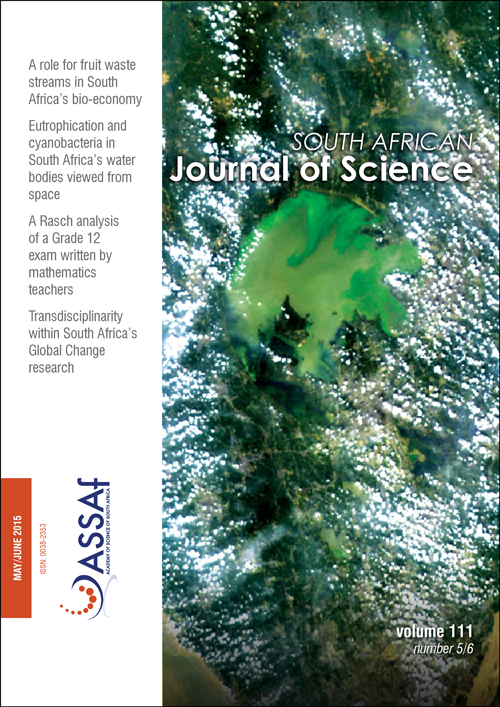Eutrophication and cyanobacteria in South Africa’s standing water bodies: A view from space
DOI:
https://doi.org/10.17159/sajs.2015/20140193Keywords:
water quality, remote sensing, MERIS satellite, turbidityAbstract
Satellite remote sensing can make a significant contribution to monitoring water quality in South African standing water bodies. Eutrophication, defined as enrichment by nutrients, and toxin-producing cyanobacteria (blue-green algae) blooms pose a significant threat to the quality of South African surface water bodies. The status and trends of chlorophyll a (chl-a, a proxy for eutrophication), cyanobacterial blooms and cyanobacterial surface scum were determined for South Africa’s 50 largest water bodies between 2002 and 2012, using a recently developed algorithm and 10 years of data from the Medium Resolution Imaging Spectrometer (MERIS) satellite. The majority (62%) of the 50 water bodies were highly nutrient enriched or hypertrophic, while 26 had cyanobacterial blooms which posed a high health risk from surface scums. This study is the first of its kind to provide quantitative water quality information for South Africa’s water bodies from a time series of satellite remotely sensed data. We demonstrate the pivotal role that satellite remote sensing can play in greatly supplementing in-situ monitoring efforts such as the National Eutrophication Monitoring Programme. The finding that many water supply bodies are severely impacted by eutrophication and cyanobacterial blooms confirms that these remain issues of critical concern for water security and supply in South Africa.
Published
Issue
Section
License

All articles are published under a Creative Commons Attribution 4.0 International Licence
Copyright is retained by the authors. Readers are welcome to reproduce, share and adapt the content without permission provided the source is attributed.
Disclaimer: The publisher and editors accept no responsibility for statements made by the authors
How to Cite
- Abstract 1110
- PDF 1472
- EPUB 246
- XML 251













.png)